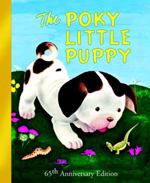Perhaps you heard about the recent report that parents and children both prefer books on paper to e-books when reading together. I suspect that if you’re above a certain age, you found this news to be an encouraging reaffirmation of your values, otherwise known as curmudgeon-hood.
Conventional (read “elderly”) wisdom has it that paper is a more “warm and nurturing” medium than an electronic device. I agree, at least for the time being.
The key phrase above is “reading together.” What is warm and nurturing about reading together is the physical contact between parent and child. At present paper books lend themselves to better contact because they give readers a qualitatively different physical experience–a distinctly three-dimensional experience. Think of what’s involved in turning a paper page:

1. Grasp the right-hand page, usually at the corner, by separating the top sheet from those underneath.
2. Life the page and carry it to the left;
3. Drop the page and smoothe it.
Can a child do this easily? Some can, some can’t, especially the very young. (That’s why “board books” were invented.)

Now compare that with what’s involved in “turning” an electronic “page:”
1. Swipe the screen or press a button. That’s it.
Can a child do this easily? Probably. So in terms of ease of use, the electronic book wins “hands down.” But in terms of physical interaction, paper provides the reader with sensations on more than one level.
Electronic pages feel the same to your touch whether they’re displaying War and Peace or The Poky Little Puppy. In tactile variety, paper is the clear winner. Different paper books have different size pages, using paper of different weights and degrees of opacity. And who has not noticed and enjoyed a “new book smell?” As a result, a paper page turns with more fanfare and tactile feedback than an electronic page. So much so that learning the skill of paper-turning can give a young child a sense of accomplishment, an added positive association.
Of course, the relative advantages of the two media will likely change as technology improves. Already e-books provide color, a major shortcoming of early devices, and full-blown Search features. But I’d say the jury is still out on the hyperlinks that e-books make possible. Although they have the potential to enrich text, hyperlinks can also distract viewers with games and activities of dubious value. As a result, e-books are just as likely to detract from a good story as to make it better.
The complex positive associations that many of today’s parents have with the books of their youth prejudice them in favor of paper. The above study also found that 60% of parents prefer that their children read from paper rather than glass.
But who knows? Twenty years from now when today’s children, who are more familiar and comfortable with technology of all kinds, become parents, they might prefer e-books. And then the definition of “warm and nurturing” will change, despite what the old folks think.
Until then, though, let your child be your active reading partner. Together enjoy the feeling of lifting each page to see what that precocious puppy is going to do next.
Paper or glass? What’s your preference for your own reading? For reading with your child?
